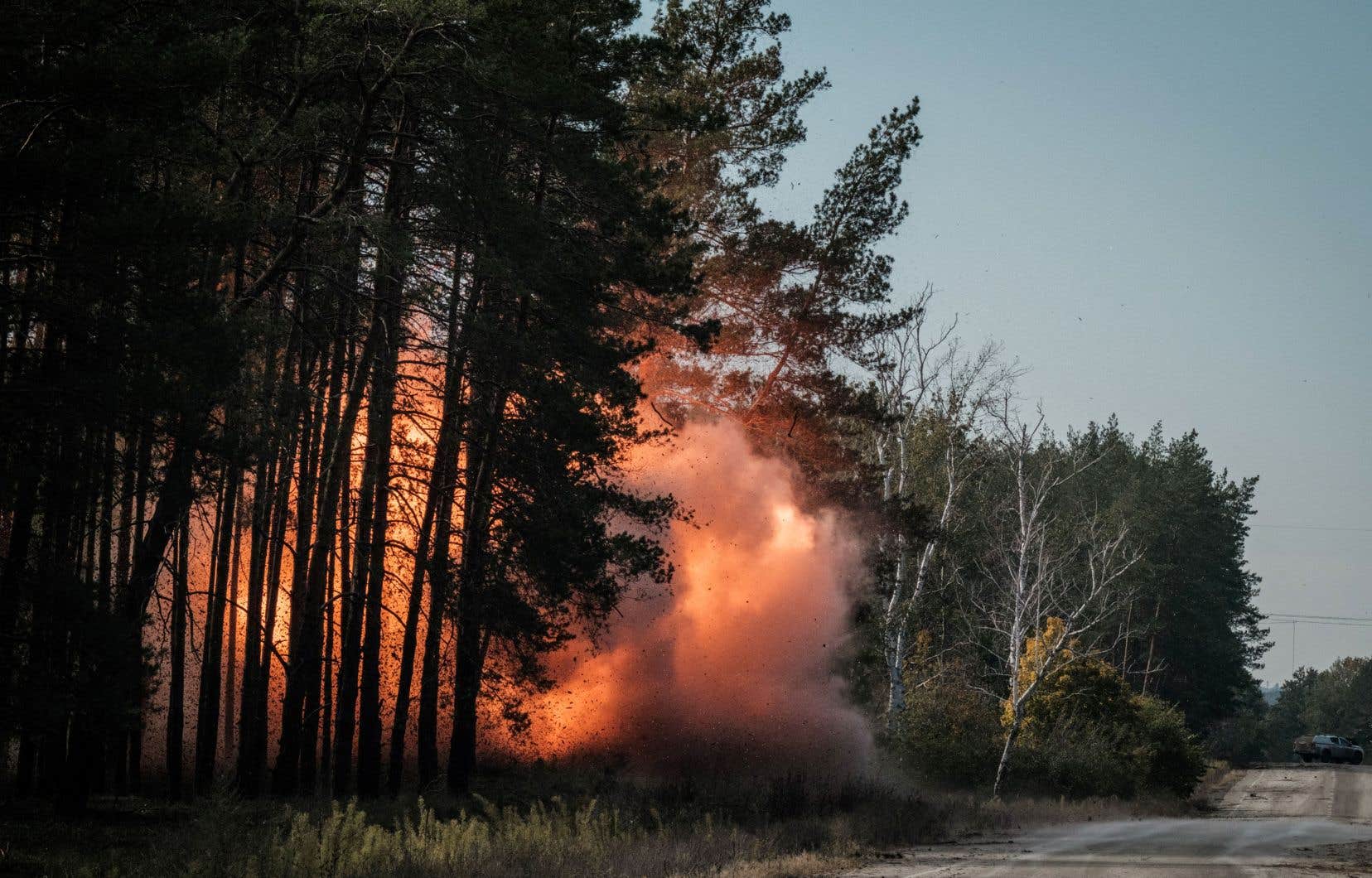Ravaged forests, flooded cities… Since the start of the Russian invasion and after almost two years of war, the environmental destruction in Ukraine is a “tragedy” of a rare scale which will affect “several generations”, s experts worry.
Even if “all conflicts” are harmful to nature, the war in Ukraine is “particularly so”, according to Doug Weir, research director at the British NGO Conflict and Environment Observatory.
Unlike wars limited to a restricted area, the front line this time is “incredibly long”, and the fighting drags on, which multiplies the damage, he notes.
In addition to intense artillery fire, there is pollution due to frequent attacks on energy infrastructure or tons of debris generated by bombings in urban areas, lists the expert, for whom nature is “a victim of war in Ukraine, massively.”
The cost of environmental damage was estimated at the beginning of November at “56 billion dollars, a staggering sum,” says Jaco Cilliers, representative of the United Nations Development Program (UNDP) in Ukraine. “The scale of the tragedy is enormous.”
Nearly 30% of Ukrainian forest areas and around 20% of national natural parks have been affected by the war, says Ruslan Strilets, Ukrainian Minister of Environmental Protection and Natural Resources.
The trees destroyed during the fighting “had been growing for decades, sometimes centuries, and in a few days [les Russes] “burned these precious ecosystems”, where many animal species lived, he laments.
The war is already responsible for around “150 million tonnes” of CO equivalent emissions2more than what Belgium emits in a year, declared Monday Viktoria Kireïeva, Ukrainian Deputy Minister of Environmental Protection and Natural Resources, on the sidelines of COP28.
“Incomplete” vision
In the east of the country, where the clashes are particularly fierce, an oak forest more than three hundred years old has “been completely destroyed”, according to Bohdan Vykhor, director of WWF-Ukraine.
As for the demining of the approximately 30% of the territory which has been mined or could have been, this risks taking “decades”, continues Mr. Strilets.
Estimating the true extent of the damage will also take years, according to specialists.
Much of Ukrainian territory is inaccessible, due to Russian occupation or proximity to the front line. From a distance, experts must feel their way, often relying on satellite images or those posted on social networks.
“The vision we currently have is therefore still incomplete,” regrets Doug Weir.
It is impossible, for example, to know the number of dolphins killed in the Black Sea, which has also become a war zone.
“We have officially recorded a thousand dolphin deaths”, some of them disoriented by the noise of military activity, explains Rouslan Strilets, but “scientists speak of tens of thousands”.
Support the army
Some destruction has been highly publicized, such as the explosion of the Kakhovka dam on the Dnieper River, which caused spectacular and deadly floods last summer in southern Ukraine.
Iegor Hrynyk, an expert from the Ukrainian Nature Conservation Group (UNCG), fears that the conflict will also have less visible effects, for example by pushing the country to “exploit more natural resources”, in particular by felling more trees, to meet the cost of war.
“Let us not forget that battles are won by armies and wars are won by economies,” replies Rouslan Strilets, who nevertheless promises that economic recovery will not come “at the expense of our environment.”
For environmentalists, making your voice heard when bombs rain remains just as complex.
“It has become more and more difficult to draw attention” to these subjects, laments Iegor Hrynyk, to whom we often respond that this is not the time, and that we will have to think about it “once the war over.”
According to Doug Weir, his organization sometimes receives “messages or tweets saying, ‘Why do you care about the environment in a conflict when so many people are dying?’ “. However, “if you want to breathe, eat, drink, the environment is key,” he recalls.
“We must understand that environmental destruction has long-lasting consequences, which will affect several generations and go well beyond Ukraine’s borders,” argues Jaco Cilliers.
But, even for an activist like Iegor Hrynyk, the “number one priority, including in terms of the environment,” remains supporting the Ukrainian army in order to keep away Russian soldiers, seen as the worst threat. “The sooner Russia is defeated, the sooner we can return to our normal lives and make the environment a priority. »
